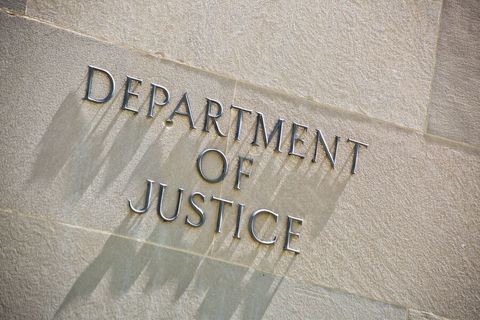New York Supreme Court Shoots Down New York Attorney General’s Bid to Dissolve the NRA
Client Alert | 5 min read | 03.17.22
On March 2, 2022, the Supreme Court of the State of New York for New York County dismissed the petition by the New York Attorney General (“NYAG”) for dissolution of the National Rifle Association of America (“NRA”), finding that the NYAG’s allegations of NRA leadership corruption, if proven, would not constitute public harm justifying the “corporate death penalty”. In August 2020, the NYAG filed a complaint against the NRA and four NRA officers, alleging that the officers had diverted millions of dollars for their personal benefit, among other misconduct. In addition to the noteworthy effort to dissolve the NRA itself, the NYAG’s complaint sought restitution and other monetary relief from the officers, as well as their removal from NRA employment and permanent injunctions against their serving other not-for-profit or charitable organizations in New York. The decision allows the case to move forward with respect to fourteen remaining claims against the NRA and its leaders.
In rejecting the dissolution claims, the court found that (a) the NYAG’s allegations “concern primarily private harm to the NRA and its members and donors, which if proven can be addressed by the targeted, less intrusive relief” that the NYAG sought in her other claims, (b) the complaint did not allege that the financial misconduct “benefited the NRA, or that the NRA exists primarily to carry out such activity, or that the NRA is incapable of continuing its legitimate activities on behalf of its millions of members”, and (c) dissolution of the NRA could impinge on the free speech and assembly rights of its members, a factor that “counsels against State-imposed dissolution”.
Background
Although currently headquartered in Virginia, the NRA is a New York not-for-profit corporation and is therefore subject to oversight by the NYAG. The NRA’s mission includes protecting the right to keep and bear arms, promoting public safety, providing training in the safe handling and efficient use of small arms, supporting shooting sports, and promoting hunter safety. The NYAG brought dissolution claims under New York Not-for-Profit Corporation Law (“NPCL”) §§1101(a)(2) and 1102(a)(2). NPCL § 1101(a)(2) provides that the NYAG may bring an action for dissolution when “the corporation has exceeded the authority conferred upon it by law, or has . . . carried on, conducted or transacted its business in a persistently fraudulent or illegal manner, or by the abuse of its powers contrary to public policy of the state has become liable to be dissolved.” NPCL §1102(a)(2)(D) authorizes the NYAG to bring an action for dissolution (assuming the rights of a member or director under NPCL §112(a)(7)) where the “directors or members in control of the corporation have looted or wasted the corporate assets, have perpetuated the corporation solely for their personal benefit, or have otherwise acted in an illegal, oppressive or fraudulent manner.”
The NPCL gives the court discretion to determine whether dissolution is the appropriate remedy in a claim brought under §1101 or 1102 and also guides the court in exercising that discretion.[1] Where the claim is brought by the NYAG, the NPCL provides that “the interest of the public is of paramount importance.”[2] In a dissolution proceeding brought by the corporation’s directors or members, “the benefit to the members of a dissolution is of paramount importance.”[3]
The Supreme Court’s Analysis
The court found that, although the allegations in the complaint would be troubling if proven, the NYAG’s claims for dissolution of the NRA could not be sustained because the NYAG did not allege that the officers’ actions had produced or tended “to produce, injury to the public”. Instead, the court noted that, according to the complaint, the “main victim of the NRA’s alleged dysfunction” has been “the NRA and its members”. Further, the court emphasized that the NYAG failed to delineate between the NRA and its leaders, conflating the individual defendants with the corporation, and ignoring allegations that the “wrongdoers in control . . . do not necessarily speak for other NRA members, some of whom have attempted to instigate reform”.
The court emphasized that judicial dissolution is an “extreme rigor of law” and has over time become a remedy reserved for corporate misconduct that “has produced, or tends to produce, injury to the public”.[4] When the NYAG seeks dissolution, there must be a “grave, substantial and continuing abuse, involving a public rather than a private right, by the corporation”.[5] The court highlighted consumer fraud as a public harm that may justify dissolution, as in People by James v. N. Leasing Sys., Inc., where a corporation tricked individuals into entering unconscionable equipment finance leases for credit card processing equipment.[6] Judicial dissolution, according to the court, may also be appropriate when the corporation’s existence is a sham, or when the corporation exists primarily to carry out illegal activity. The court described precedents such as People v. Zymurgy, Inc., et al., where the company acted as a front for a pedophilia organization, no board meetings were held, and potential child sex crimes were implicated.[7]
The court also noted that the dissolution claims warranted particularly careful scrutiny because they implicated First Amendment concerns in that “the NRA is a prominent advocacy organization that represents the interests of millions of members”, noting that the “State-sponsored dissolution of such an entity is not something to be taken lightly or without a compelling need”. The court found that the proposed remedy of dissolution would be disproportionate and not narrowly tailored to address the alleged financial wrongdoings. According to the court, the private harms caused by the NRA officers against the NRA and its members and donors can instead be amply addressed by the NYAG’s other claims.
Looking Ahead
While the court granted the motion to dismiss the dissolution claims, the court denied the NRA’s motions to dismiss eight other causes of action, including the NRA’s failure to apply proper corporate governance, entry into unlawful related party transactions, violation of statutory whistleblower protections, and filing of false information in annual reports to the NYAG. The NYAG has the right to appeal the decision and the office stated that they are considering their legal options. If the decision is not overturned on appeal, the court’s decision to dismiss the dissolution claims clearly demonstrates the limitations on the power of the NYAG to cause the dissolution of a New York not-for-profit corporation, where the NYAG is unable to establish clear harm to the public caused by the corporation, as opposed to harm to the corporation and its members and donors.
[1] See NPCL §1109(a).
[2] NPCL § 1109(b)(1).
[3] NPCL §1109(b)(2).
[4] People v. N. Riv. Sugar Ref. Co., 121 NY 582, 608-609 (1890); see also People by Abrams v. Oliver Schools, Inc., 206 A.D.2d 143, 146 (4th Dept 1994).
[5] Oliver Schools, Inc., 206 A.D.2d at 147.
[6] 193 A.D.3d 67 (1st Dept 2021).
[7] 233 A.D.2d 178 (1st Dept 1996).
Contacts
Insights
Client Alert | 2 min read | 12.23.25
Record-Setting False Claims Act Settlement Highlights DOJ Commitment to Customs Enforcement
On December 19, 2025, the Department of Justice (DOJ) announced a $54.4 million settlement with Ceratizit USA, LLC, a distributor of tungsten carbide products, resolving allegations that the company violated the False Claims Act (FCA) by evading customs duties on products imported from China. This settlement is believed to be the largest ever customs-related FCA resolution, and this high-water mark underscores the government’s heightened enforcement focus on tariff evasion.
Client Alert | 6 min read | 12.22.25
Emerging Legal Issues for Skilled Nursing Facilities in New York: A Year in Review
Client Alert | 14 min read | 12.22.25
European Commission Proposes Biotech Act to Boost Health Biotechnology in the EU
Client Alert | 11 min read | 12.22.25
European Commission Proposes Simplifying the Rules on EU Medical and In-Vitro Diagnostic Devices




